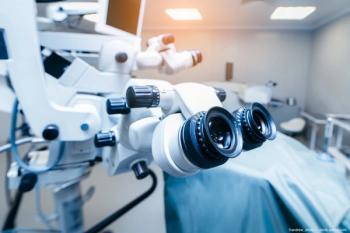
Optos marks 25,000 devices installed globally
According to the company, 2,500 clinical and peer-reviewed studies that span 235 disease states have demonstrated the clinical utility of Optos technology.
Optos PLC has announced a dual milestone achievement of more than 25,000 devices installed worldwide and the collection of 2,500 clinical and peer-reviewed studies spanning 235 disease states.
For more than 30 years, Optos has had a positive impact on the standard of retinal imaging technology and supported the advancement of patient care, the company noted in a news release.
Optos CEO Robert Kennedy pointed out the double milestone reflects the unwavering commitment that Optos has had to innovation and excellence in providing the best and clinically-relevant technology available, since our inception.
“The ongoing growth and recognition of the robust body of clinical research efforts underscores the dedication of our team to continue improving patient outcomes and driving development in ophthalmic care,” Kennedy said in a news release. "We extend our sincerest gratitude to our customers for their continued trust and support. Their feedback and partnership are invaluable as we strive to make retinal imaging more patient-friendly and accessible while empowering clinicians to deliver exceptional care."
A single-capture, 200-degree, ultra-widefield retinal imaging technology, Optos defines the standard for comprehensive imaging beyond traditional constraints, crucial for diagnosing and managing a wide range of ocular conditions that otherwise may go undetected and undiagnosed.
Optos offers 9 imaging modalities available across its device platforms, including the recent addition of optomap color RGB, natural color and optomap blue fundus autofluorescence imaging modalities, furthering its technology offering. In addition, the company’s combined imaging devices integrate ultra-widefield retinal imaging with optomap-guided OCT, providing clinicians with comprehensive insights into retinal health.
Moreover, the company’s technology also integrates into a variety of healthcare settings from telehealth to retina. With continued prioritization for eyecare providers on device ease of use and productivity, Optos pointed out in the news release its technology streamlines workflow and enhances practice efficiency
The commitment to patient and user-friendly solutions continues to drive modernization and excellence in ophthalmic imaging, ultimately improving patient outcomes and enhancing practice efficiency worldwide.
Newsletter
Don’t miss out—get Ophthalmology Times updates on the latest clinical advancements and expert interviews, straight to your inbox.


















































.png)


